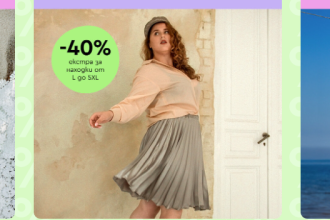A full closet doesn’t always mean better options. In fact, many people find themselves standing in front of rows of clothes and feeling like they have nothing to wear. That’s where the idea of a capsule wardrobe steps in. It’s not about minimalism for the sake of trend—it’s about clarity. With the right pieces, you can dress with ease and purpose through every season, without the clutter.
A capsule wardrobe is a curated collection of versatile garments that mix and match easily, saving time, space, and decision fatigue. Done thoughtfully, it keeps your style consistent and functional throughout the year.
Here’s how to build one that truly works, season to season.
Step 1: Define Your Style and Lifestyle
Before buying or editing anything, take a moment to understand what you actually need. Your lifestyle drives your wardrobe. If you work in an office, your capsule will look different than someone who works from home or travels often. The same goes for your personal style—whether it’s classic, laid-back, polished, or eclectic.
Ask yourself:
- How often do I dress formally or casually?
- What do I wear repeatedly without even thinking?
- Which pieces feel the most “me”?
Clarity here will help you avoid pieces that don’t serve your everyday life.
Step 2: Choose a Neutral Base
A successful capsule wardrobe starts with a cohesive color palette. Neutrals are key—they make it easier to layer, mix, and build looks without clashing. That doesn’t mean avoiding color altogether, but anchoring your wardrobe in shades like black, white, navy, beige, or gray creates consistency.
Stick to one or two base tones and allow one or two accent colors to add personality. The fewer colors you work with, the more combinations you can create from fewer items.

Step 3: Build Around Timeless Essentials
These are the core items that never go out of style and form the foundation of your wardrobe year-round. Think clean lines, good quality, and versatility.
Core Pieces to Include:
- White T-Shirt
- Button-Up Shirt (white or light blue)
- Black or Navy Blazer
- Straight-Leg Jeans
- Tailored Trousers
- Knit Sweater (light enough to layer, warm enough to stand alone)
- Little Black Dress
- Midi Skirt or Slip Skirt
- Classic Coat (Trench or Wool)
- Well-Fitting Jacket (Denim or Leather)
- Ankle Boots, Sneakers, Flats
Each of these pieces can be styled multiple ways and work across seasons with a few smart adjustments.
Step 4: Account for Seasons Without Starting Over
Instead of building four entirely separate wardrobes, think about layering and fabric weight. You don’t need to replace your entire closet every few months—just rotate pieces in and out based on weather and comfort.
Spring:
- Add lightweight sweaters, shirts, and a trench coat.
- Choose breathable fabrics like cotton and linen.
Summer:
- Rely on tank tops, linen dresses, and shorts.
- Keep accessories light—sandals, straw hats, and minimal jewelry.
Fall:
- Bring back layers—long-sleeve tops, cozy knits, and boots.
- Add texture with wool, suede, or corduroy.
Winter:
- Focus on warmth: coats, thermal layers, scarves, and gloves.
- Use your core pieces underneath heavier layers to stay practical and stylish.
Step 5: Accessorize Thoughtfully
Accessories can completely change the tone of an outfit, allowing you to get more from fewer clothes. A basic outfit can become work-ready, weekend-casual, or evening-appropriate just by switching out shoes, bags, or jewelry.
Key accessories might include:
- A structured tote or crossbody bag
- Minimal gold or silver jewelry
- Scarves in different textures
- A black belt with subtle hardware
- Sunglasses with a classic frame
Choose items that align with your wardrobe’s color palette to keep it cohesive.

Step 6: Shop Intentionally
Once you’ve outlined your needs, resist the urge to buy in bulk or chase every trend. Focus on quality over quantity. A capsule wardrobe isn’t about constant newness—it’s about consistency.
When you do shop, ask:
- Does this work with at least 3 other pieces I already own?
- Is it comfortable and well made?
- Will I still want to wear this next year?
This mindset leads to fewer impulse buys and better wardrobe satisfaction in the long run.
Step 7: Maintain and Rotate
A capsule wardrobe isn’t static. As seasons change, pieces can be swapped in and out while keeping the core intact. Store off-season clothes neatly and revisit your selection every few months to see what’s working and what isn’t.
You’ll also want to regularly check for wear and tear. When something no longer fits or functions, replace it with care—ideally with a piece that can step into the same role, not just fill space.

Final Thought: Less Noise, More Purpose
Building a capsule wardrobe isn’t about perfection. It’s about creating a system that gives you freedom—not only from overstuffed closets but also from the pressure to constantly shop or chase fleeting trends. When you get it right, getting dressed becomes quicker, easier, and far more satisfying. And over time, that simplicity leaves space for style to shine in its own quiet, confident way.





